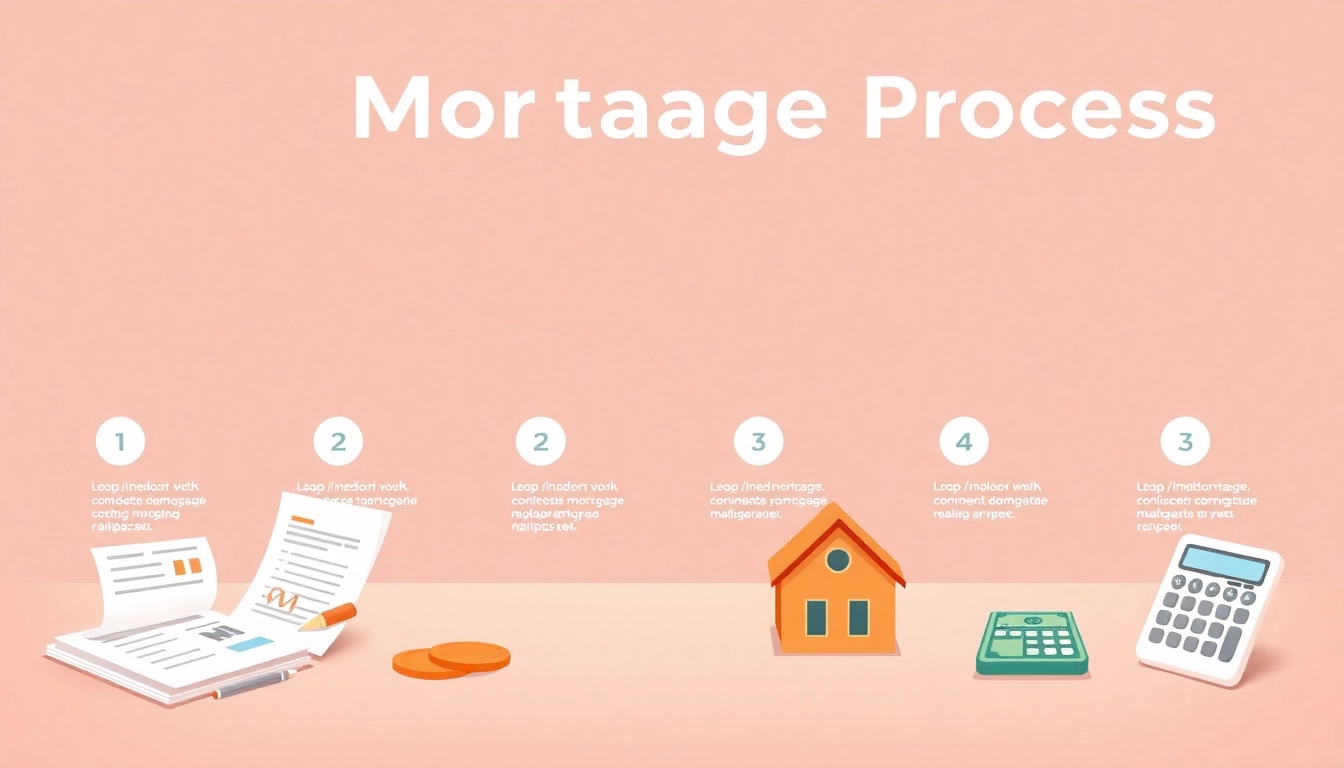Understanding the Mortgage Process for Lenders
In the world of home finance, the mortgage process for lenders plays a crucial role in ensuring that borrowers can obtain the best possible financing for their needs. This article provides an in-depth understanding of the mortgage process, exploring the key stages and essential steps that lenders must follow for effective mortgage processing. By mastering these components, lenders can enhance their efficiency, minimize risks, and provide better service to their clients.
What is the Mortgage Process?
The mortgage process is a series of steps that individuals must go through to secure financing for purchasing a home. From obtaining pre-approval to closing the loan, each step involves specific actions that lenders and borrowers must undertake to ensure a smooth transaction. Understanding this process is vital for lenders, as it enables them to provide guidance to their clients and streamline their own operations.
Key Stages in the Mortgage Process
The mortgage process can be broken down into several key stages, which include:
- Pre-Approval: Lenders evaluate a borrower’s financial situation to determine how much they can afford to borrow.
- House Shopping: Borrowers find a property that suits their needs and budget.
- Mortgage Application: Borrowers formally apply for the mortgage, providing necessary documentation.
- Loan Processing: Lenders verify the information provided in the application, ensuring all requirements are met.
- Underwriting: A thorough risk assessment is conducted, determining the likelihood of the borrower defaulting on the loan.
- Closing: The final steps to finalize the loan are completed, and funds are disbursed.
Importance of Each Step for Lenders
Each of these stages is critical for lenders as they mitigate risks, ensure compliance with regulations, and ultimately facilitate a successful loan closing. By understanding the significance of each step, lenders can optimize their processes and enhance their decision-making capabilities.
Steps Lenders Must Follow for Effective Mortgage Processing
Pre-Approval: Initial Steps for Lenders
The pre-approval process is often the first point of contact between lenders and prospective borrowers. During this stage, lenders assess a borrower’s credit history, income, and overall financial health to determine how much they are eligible to borrow. Pre-approval not only gives borrowers a realistic expectation of their purchasing power but also streamlines the subsequent steps in the mortgage process.
Key actions for lenders during this phase include:
- Collecting financial documents such as pay stubs, bank statements, and tax returns.
- Conducting a credit check to evaluate the borrower’s creditworthiness.
- Providing a pre-approval letter that outlines the maximum loan amount, interest rate, and any conditions that the borrower must meet.
Assembling and Reviewing Documentation
Once a borrower has selected a property, they will submit a mortgage application. Lenders must then gather and review comprehensive documentation, including:
- Proof of income and employment.
- Credit history and score to evaluate borrowing risk.
- Debt-to-income ratio analysis to ensure the borrower isn’t over-leveraged.
This thorough review helps lenders ascertain the borrower’s capacity to repay the loan, which is crucial for making informed lending decisions.
Conducting Risk Assessment and Underwriting
The underwriting process involves assessing the risks associated with lending to a specific borrower. Lenders analyze various factors, such as:
- Creditworthiness, including payment history and outstanding debt.
- Property appraisal to evaluate the home’s market value.
- Market conditions that may affect the borrower’s ability to repay, such as employment stability and economic shifts.
This step is essential for mitigating potential losses and ensuring that the lender maintains a healthy portfolio while complying with regulatory standards.
Common Challenges in the Mortgage Process for Lenders
Understanding Borrowers’ Needs
One of the significant challenges for lenders is accurately understanding the unique needs and circumstances of each borrower. Clear communication during the pre-approval phase is critical to build trust and ensure that borrowers feel supported throughout the process.
Strategies for improvement include:
- Utilizing open-ended questions to gather detailed information from borrowers.
- Implementing customer relationship management tools that provide a comprehensive view of interactions.
- Scheduling follow-up meetings to address concerns and provide guidance.
Mitigating Risks and Issues
Every loan carries inherent risks, including defaults or payment delays. Lenders can mitigate these risks by conducting thorough due diligence.
Actions to consider include:
- Utilizing automated underwriting systems to analyze data more efficiently.
- Regularly updating risk assessment models to reflect market changes.
- Offering products such as mortgage insurance to protect against borrower defaults.
Enhancing Communication with Clients
Effective communication is vital throughout the mortgage process. Lenders must keep clients informed of their loan status, potential hurdles, and required documentation. Establishing a feedback loop can also help identify areas of improvement.
Methods to enhance communication include:
- Proactively reaching out during critical phases of the mortgage process.
- Utilizing digital platforms for real-time updates and documentation sharing.
- Providing educational resources to help borrowers understand the process better.
Best Practices for Streamlining the Mortgage Process
Utilizing Technology in Mortgage Processing
Incorporating technology into mortgage processing can significantly enhance efficiency. Automated systems for application processing and underwriting can reduce human error and speed up the time it takes to close loans.
Technological advancements to consider implementing include:
- Automated document collection systems that reduce the time spent on gathering and verifying documents.
- Online portals for borrowers to submit applications and track their progress.
- Artificial intelligence tools to analyze creditworthiness and assess risk.
Training Staff for Efficiency
Investing in staff training is crucial for streamlined operations. Ensuring that employees understand the mortgage process and best practices will enhance productivity and customer satisfaction.
Key training areas include:
- Regular workshops on regulatory compliance and changes in lending practices.
- Role-playing scenarios to improve customer engagement and problem-solving skills.
- Updates on new technologies and software being utilized in mortgage processing.
Feedback Mechanisms for Continuous Improvement
Establishing feedback mechanisms allows lenders to gather insights from borrowers and staff about the mortgage process. This information is invaluable for identifying bottlenecks and enhancing customer service.
Effective feedback strategies can include:
- Surveys after the closing of each loan to gauge borrower satisfaction.
- Regular team meetings to discuss challenges and celebrate successes.
- Implementing an open-door policy for employees to share their thoughts on operational practices.
Measuring Success in the Mortgage Process
Key Performance Indicators for Lenders
To assess the success of their mortgage processes, lenders should establish key performance indicators (KPIs). These metrics can assist in refining processes, enhancing client experiences, and ultimately driving profitability.
Significant KPIs include:
- Average time to close a loan from application to funding.
- Percentage of loans that close on time versus those that experience delays.
- Overall loan origination costs versus budgeted amounts.
Customer Satisfaction Metrics
Understanding customer satisfaction is crucial in the mortgage business, where referrals and repeat business are vital. Metrics such as Net Promoter Score (NPS) can effectively gauge borrowers’ willingness to recommend the lender to others.
Other useful satisfaction metrics can include:
- Overall satisfaction ratings collected through post-transaction surveys.
- Feedback on communication frequency and clarity, as these often impact the borrower’s experience.
- Follow-up metrics to assess ongoing customer relationships beyond loan closing.
Evaluating Process Efficiency
Regularly evaluating the efficiency of the mortgage process allows lenders to identify areas that require improvement. Each stage should be scrutinized to find opportunities for enhancement.
Best practices for evaluation include:
- Tracking the time spent on each process step to identify bottlenecks.
- Analyzing success rates of applications versus rejections to inform future practices.
- Reviewing employee performance data related to the mortgage process to ensure teams meet established targets.
In conclusion, mastering the mortgage process for lenders involves a clear understanding of each stage, along with effective strategies for communication, technology use, and continuous improvement. By focusing on these aspects, lenders can improve efficiency, enhance customer satisfaction, and drive overall success in their mortgage operations.












Leave a Reply